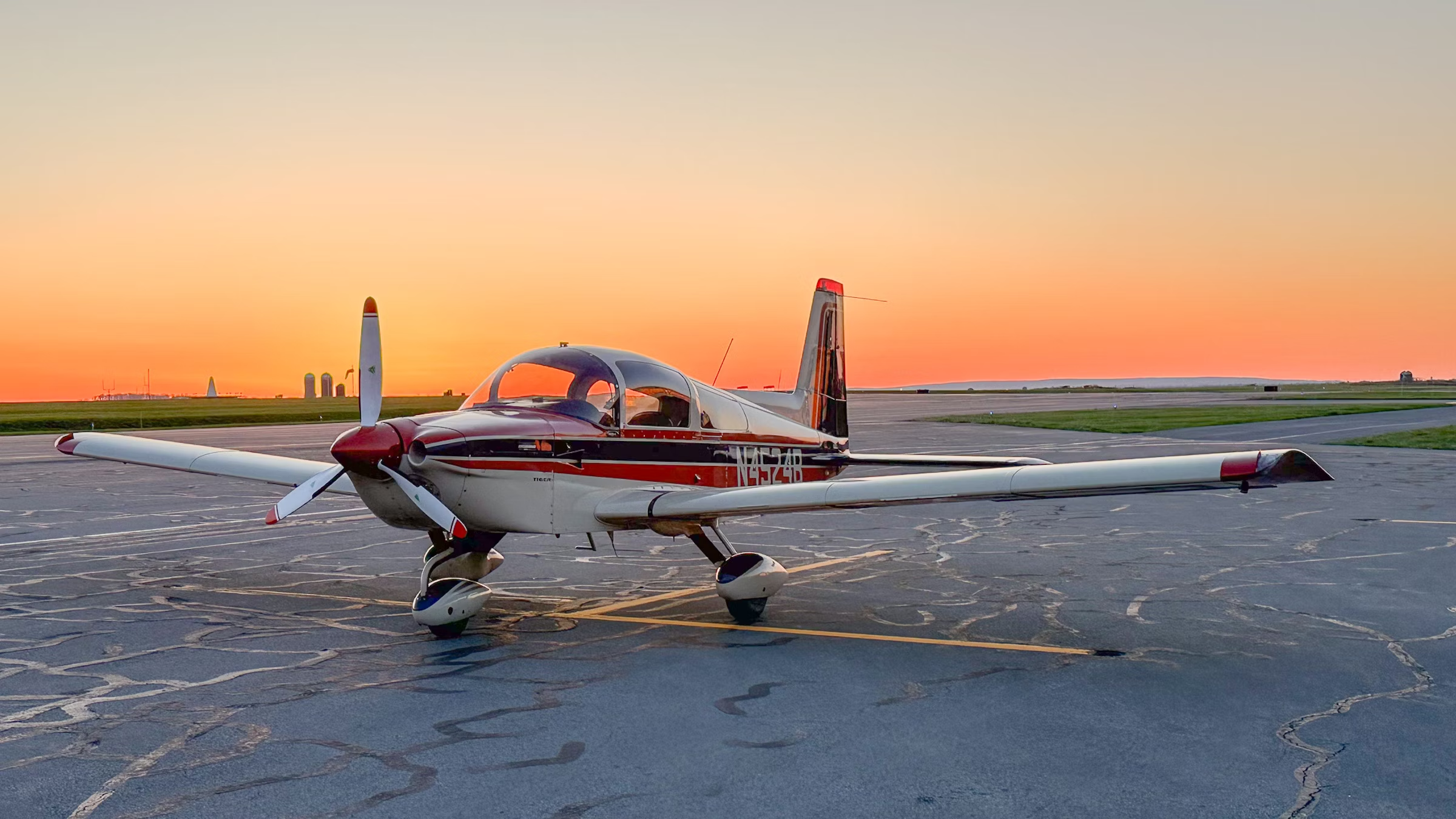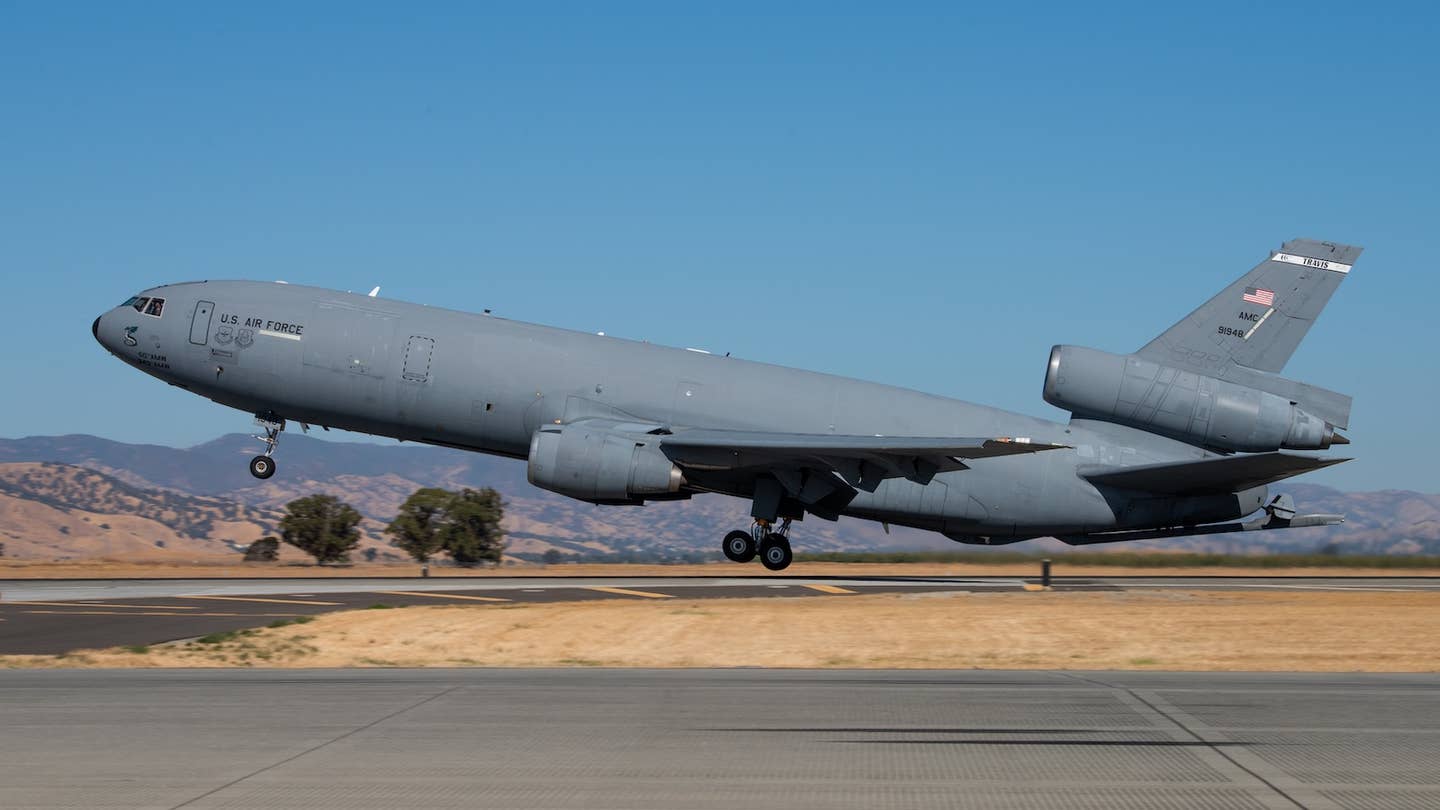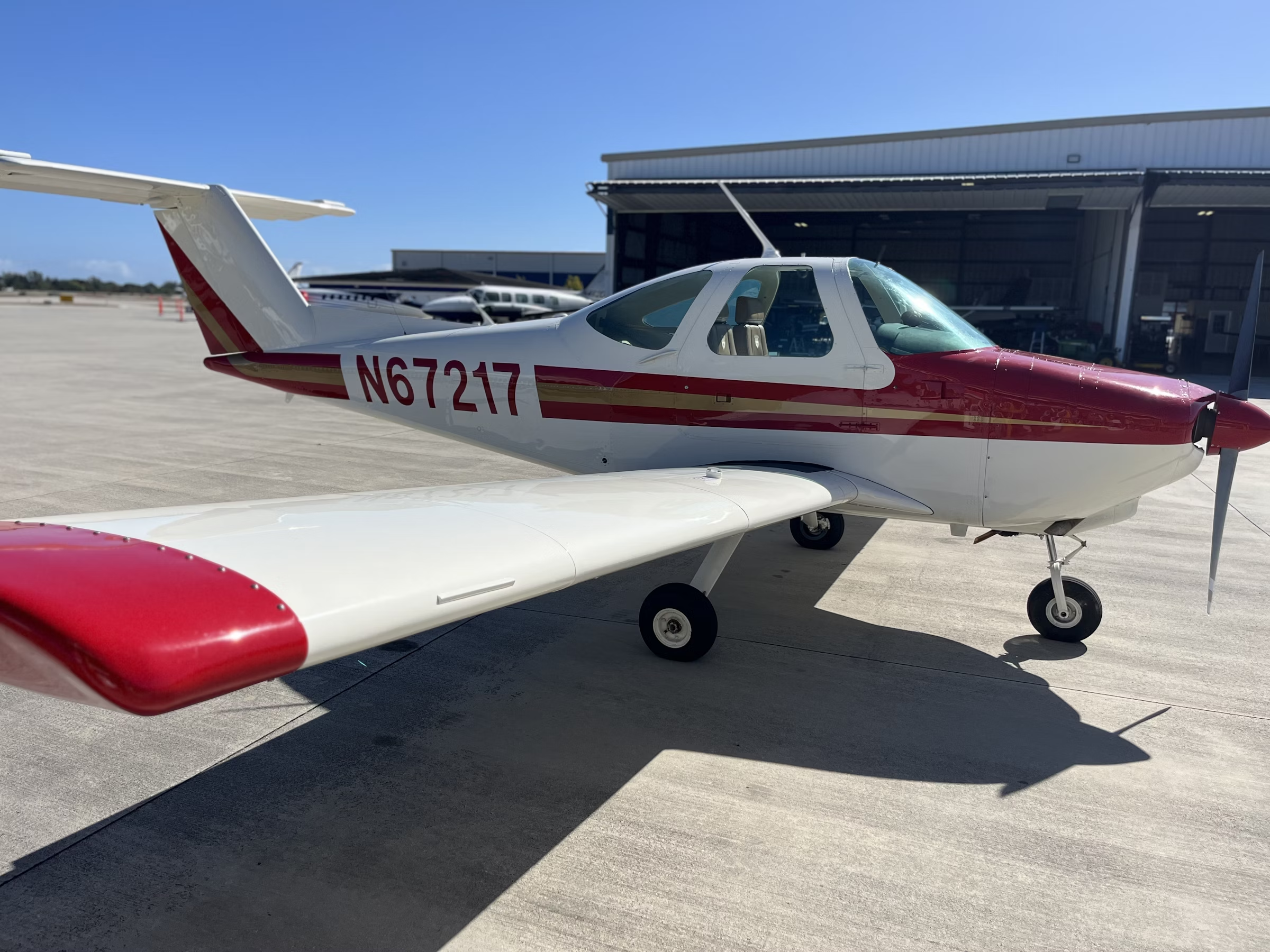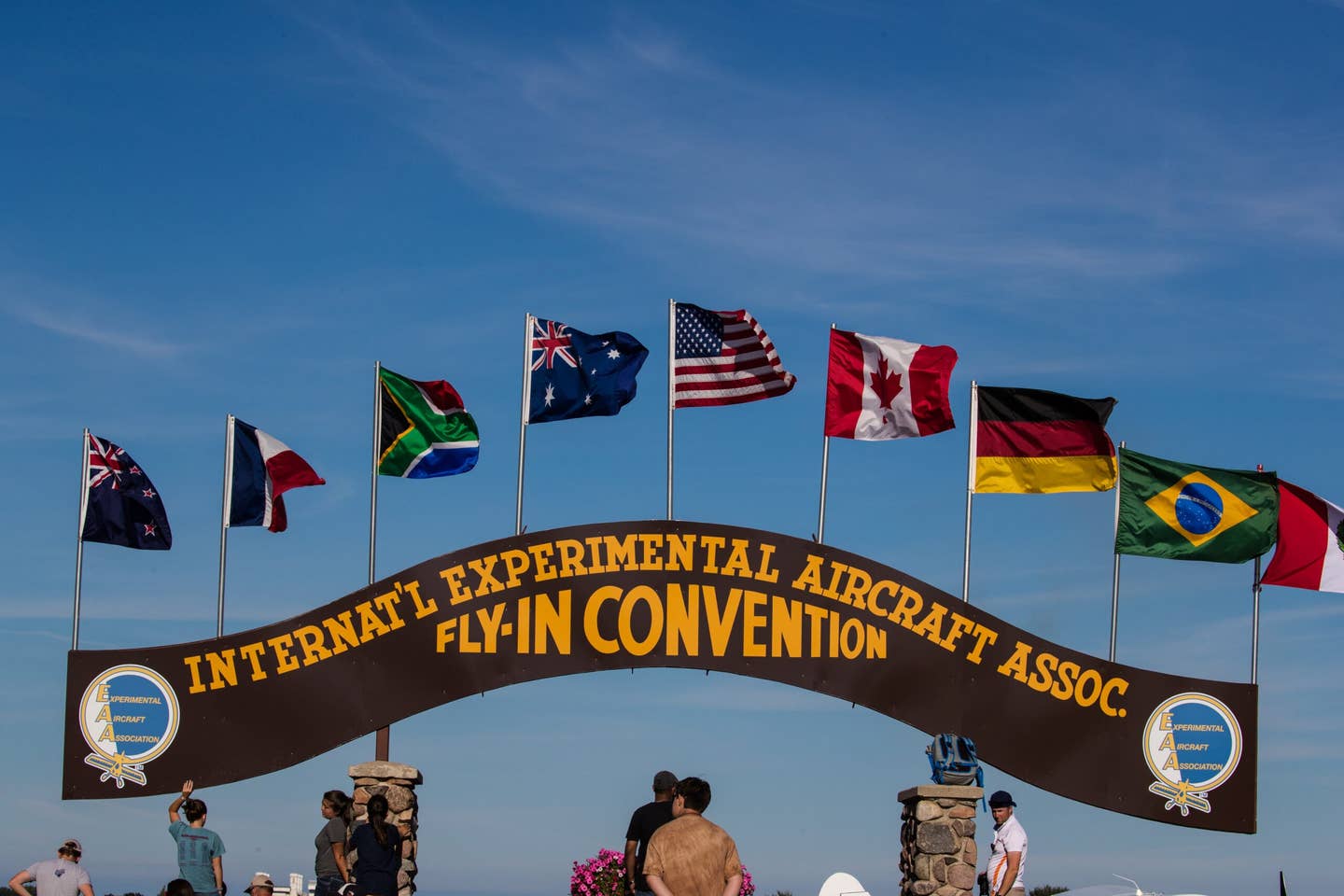Flight Review: Building a Better Sling Shot
Rotax’s 916 enlivens Sling’s four-seaters.
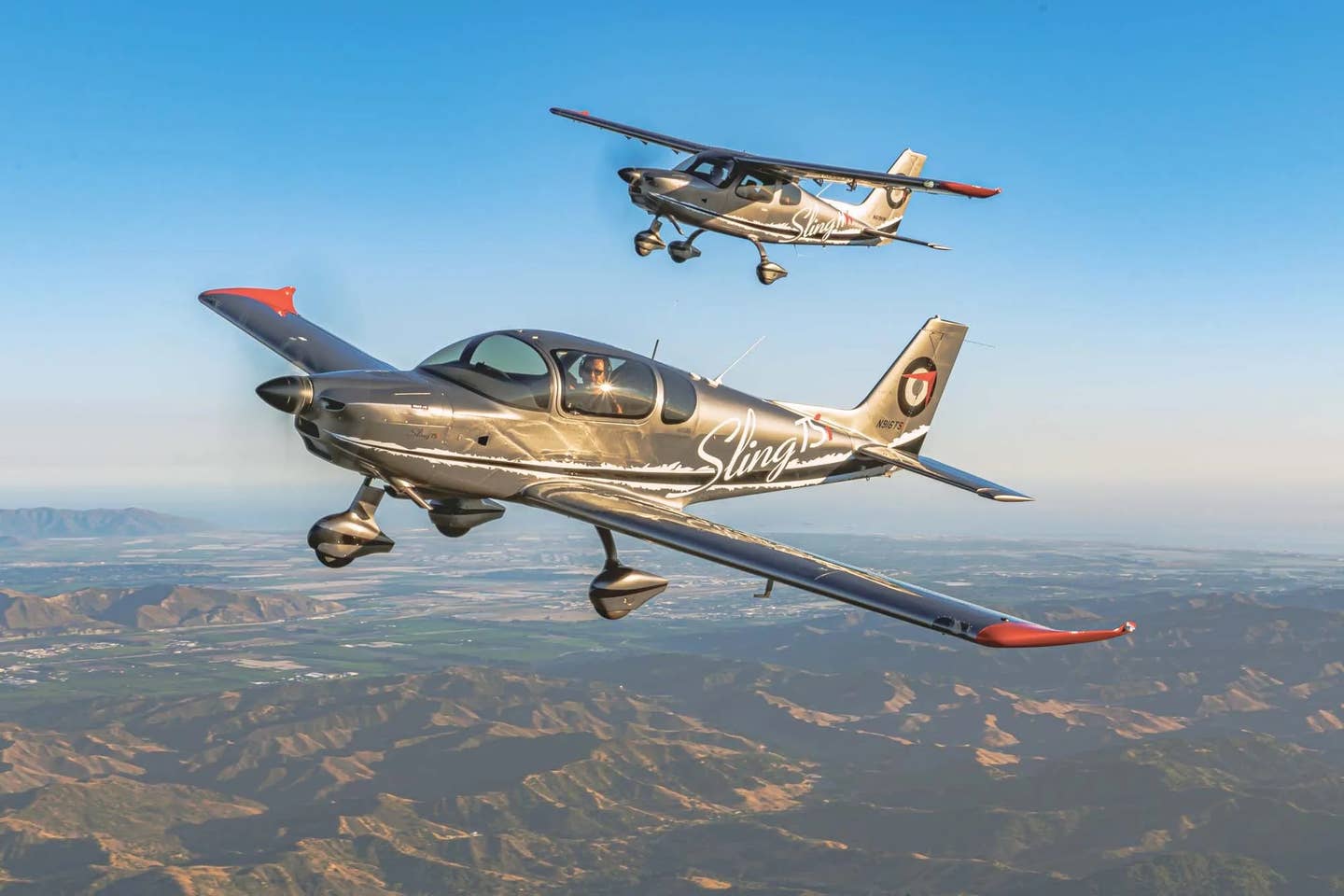
[Kitplanes file photo]
Back when I flew the original Sling High Wing, I was impressed with the design, the handling and the overall airframe. It was a nice job overall by Sling. The same could be said for its low-wing brother, the TSi. When I flew the four-seat TSi with the Rotax 915 iS, the performance impressed—with four adults, full fuel, and a density altitude of over 9,500 feet, it climbed away from the mountain runway at Big Bear Lake, California, at over 500 fpm! The turbo made the difference even as the maximum power from the 915 was fairly modest.
The High Wing was different. Perhaps because it sports more frontal area than the TSi by the nature of the wing/fuselage intersection—remember that the wing is exactly the same, just on top instead of on the bottom—the High Wing was approximately 10 knots slower than its low-wing sibling. Where the TSi felt like it had performance in more than sufficient quantity, the High Wing seemed like it would be happy with more.
Cue Rotax, the engine company that doesn’t stand still. Since the High Wing was released, the new 916 iS arrived to supplement (not replace, for now) the 915, providing 160 hp for takeoff compared to the 915’s 141. (Both are nearly identical at max-continuous power—137 for the 916, 135 for the 915.) That 19 hp was just what the High Wing needed, so Sling set about installing the new powerplant. And not just on the High Wing—it decided to build a new TSi with the burlier Rotax to bring to AirVenture this year.
I caught up with them at Wautoma, Wisconsin, for a couple of short evaluation flights before they tackled the busy Fisk arrival. Both airplanes had been finished less than a week before the show and had been test flown in Southern California. I flew them after two days of cross-country flying that brought rave reviews from the company pilots who got to make the trip. I hopped in each in turn and came away equally impressed.
KITPLANES offers comprehensive articles on all aspects of homebuilt aircraft, from design and construction to flying and maintenance. Discover new aircraft designs and projects that will ignite your creativity.<br><br> If you're not already a subscriber, what are you waiting for? Subscribe today to get the issue as soon as it is released in either Print or Digital formats.
Subscribe NowFit, Finish, and Details
As Oshkosh approached, the folks at The Airplane Factory (the U.S. distributor for Sling kits) in Torrance, California, burned the midnight oil—working nearly around the clock—to get both new airplanes finished. Sporting matching custom-designed paint schemes, the sharp-looking machines exude “finish” for homebuilt aircraft, with factory-supplied leather interiors and a clear attention to detail. The uninitiated would never know they weren’t commercial, certified aircraft. Name another one built with an electrically adjustable seat—as part of the factory kit options! (As an aside, I remember the impressive upholstery shop at the Sling kit factory in South Africa—they do great work, starting nearly from scratch. I say nearly because they still didn’t have a ranch to raise the cattle to get the leather, but they were working on it!)
There have been numerous minor changes and upgrades to the High Wing since the prototype I flew, many of them to reduce weight, but some were simple refinements based on initial flight experience. The standard avionics package is a Garmin G3X Touch with two large screens; that much has stayed the same. They have, however, changed to an MT constant-speed that has a standard prop lever next to the throttle instead of the original electric prop with a knob on the panel. I prefer the new setup in part because the original had a knob just above the prop pitch selector that controlled the flaps—it was easy to confuse the two. The new lever is much more natural.
For a new airplane, the High Wing was reported to be very trouble-free on the trip from the West Coast. As I flew it, the Hobbs read just over 20 hours—understand that the factory airplanes are licensed as Experimental/Exhibition so they had only a 5-hour Phase I. The most noticeable problem? A thick seal on the right door near the latch that made it hard to close properly. It closed fine from outside and could be opened from the inside, so it’s something they’ll fix with a little trimming before flying it home.
You can build the High Wing (or any of the Sling aircraft) with a simple interior, of course, but Sling integrates everything so nicely that frankly it would be a shame to build it that way unless you were trying to produce an “ultimately light” ship for some specific mission. It can be a little hard to wrap our heads around just how finished these modern kits can be, but that is the way of the world now and I can’t say I don’t enjoy flying something so nicely finished.
Under the Hood
So, what’s different about a 916? Well even though the engine is similar in shape and size, it generates more heat and requires a bit more cooling. There are also upgraded accessories that mount a little differently—the conversion from one to another requires essentially a complete overhaul of the firewall-forward installation—including a new cowl with additional cooling inlets and ducts. And an upcoming option—installed on the 916-powered TSi—is air conditioning, which requires a new heat exchanger and duct “pod” underneath the lower cowl.
The first U.S. High Wing customer (who brought her airplane to Oshkosh from her factory build in Johannesburg in 2022) was also the first to upgrade from the 915 to the 916. This involved dropping the airplane off at the Sling Build Assist Center in Michigan for a month of modifications that required a bit of tinkering and tuning before it was ready. But it sat roundly in its display spot on Sling Island at Oshkosh, so the downtime was worth it—and now that the American Sling folks have done a couple, the installation should be much simpler. In fact, the Torrance folks reported that while the schedule was rushed, they had little problem integrating the power package and getting the airplane through Phase I in a couple of days. From the builder’s point of view, installation is a matter of following instructions, using the parts supplied by the factory and doing quality work—no matter if they use the original 915 or the 916.
Let’s Go Fly the High Wing!
The High Wing Sling is a comfortable airplane—no doubt about it. You adjust the seat forward and aft by pulling a lever, just like on a car, and you can motor it up or down with electrics. Adjust the seat so that the rudder pedals are comfortable—no need to see if you have ankle movement for the brakes, because they aren’t on the pedals. Like all Slings, the brakes are on a single lever on the center console and direct nosewheel steering takes care of maneuvering on the ground. You quickly learn to taxi with the throttle barely cracked and your hand on the brake knob. While the turning radius is larger than that of an airplane with a castering nosewheel and differential brakes, a little planning for taxi paths will help you park the airplane on the desired spot.
The High Wing has a solid ceiling because of the wing design—exactly the same as the wing on the TSi, right down to individual ribs—so there are no skylights. It can make some pilots, especially those low-wing pilots used to bubble canopies, feel a little claustrophobic. But that just means that you have to pay attention before rolling into a turn and maybe lean forward a bit to clear the airspace in that direction, no different than many other high-wing airplanes.
Like most homebuilts, the Slings use a stick for pitch and roll, forgoing the yoke you might expect in a high wing side-by-side. The kit uses Pioneer grips with a sufficient number of buttons to satisfy those who want complete control of the aircraft without changing their grip—and they are comfortable as well. The power levers (throttle and prop) are on the center console where the hand rests comfortably. The flaps have a rotary selector on the panel with four positions available, one of them being up.
Starting a Rotax is becoming as normal for me as the typical Lycoming or Continental has been most of my life. Master, avionics, Lane A and B on, flick the fuel pump and hit the starter. The 916, like the other injected Rotaxes before it, starts like a car. When I flew the High Wing, it had just come in from Des Moines, so there was no time needed for warmup and we were ready for taxi as soon as we finished punching buttons on the EFIS. To taxi, release the parking brake, set the throttle a touch above idle and control speed with the hand brake and steer with your feet. You can easily do the Lane A/B checks while rolling to the runway, set your flaps to Position 2, flight controls free and correct. When you reach the end of the runway, you’re ready to go.
The single most important test result of this flight came as I added full power and felt the acceleration—and sure enough, the 916 is the engine that this airframe was destined to use! While the 915-powered plane is adequate, the High Wing with the 916 just feels right. We quickly had good aerodynamic control, the nose was ready to come up at 55 knots and we were flying by 65. Climb was good at 75 and we were out of the pattern quickly in the summer Wisconsin air.
A little quick air work—some stalls (it was well-behaved and didn’t favor a wing), steep turns, climbs, descents and a speed run—confirmed that this is a nice-handling airplane. The landing pattern was just as easy—slow to the top of the white on downwind, drop a notch of flaps. Base, another notch and keep it at about 80 knots. Turn final, use full flaps (if you want), fly down to the runway about 70–75 and it almost lands itself. Unless you’re really high, keep a little power on because it slows pretty quickly due to the higher drag than its low-winged sibling—but nothing different than any other airplane, really. Don’t forget to put your hand on the brake lever on the center console after landing—pushing on the rudder pedals won’t do anything to stop you!
Oh, you’re wondering about cruise speeds? Sling is still testing the 916-powered model but the 915 was claimed to cruise at 144 knots true at 9500 feet. It’s unlikely the new model will be faster because there’s little difference in the maximum-continuous power ratings between the 915 and 916. No, it’s not a speedster—it is a cruising machine with four seats and room for luggage—and that is just what many builders are looking for after looking at the eye-watering price of a new certified four-seater. But it is fuel-efficient at economy-cruise settings, usually burning less than 8 gph. Development has actually improved the 916’s specific fuel consumption over the 915 despite making more peak power.
Cool Running
The Sling folks who flew the airplanes all the way from Torrance were enjoying the beautifully manicured grass and shade at Wautoma when I returned the High Wing to them so they could reload it for the trip into Oshkosh while I took the TSi for a spin. I’ve always enjoyed the TSi with the 915 iS engine, so the 20 extra horsepower was never something that I thought was needed. But I can’t think of any respectable pilots who will turn down horsepower. And in this case, the extra horsepower is being used partially to support an air conditioning system—something most piston engine pilots only dream about!
Let’s put the TSi in context. Originally with the 141-hp 915 iS, it would get beat by the more powerful Van’s RV-10 at low altitude but eventually catch up at altitude because the Rotax holds onto power while the RV’s Lycoming gradually loses it. The crossover point is somewhere above 12,000–14,000 feet where the horsepower comparison gets pretty close. Nominally, the TSi is credited with a 153-knot cruise at 9500 feet where Van’s says the RV-10 (with 260 hp) does 174 knots at 8000 feet. (Truth is, most RV-10 owners fly in the mid-160s at more economical fuel flows.)
Given the good performance with the 915, we agree with Sling that giving up some of the extra horsepower produced by the 916 to power an A/C system might not be a bad idea in the Sunbelt. The air conditioning system is being developed by some bright fellows in Southern California and is quite compact, weighing in at only 30 pounds. It has a small control panel on the main instrument panel of the Sling and feeds air to the cabin through a vent on the glareshield as well as the two normal side vents on the panel.
The A/C worked well as soon as the engine was running—just like in a car—and since the TSi doesn’t have the shade of a high wing, the cool air was quite nice on a sunny Wisconsin summer day. We can only imagine it will be quite nice in the desert Southwest!
How’s It Fly?
The TSi has always flown well with the 915 and the 916 just makes it a little more sprightly. It accelerates quickly on the runway and climbs very well. The engine is as smooth as any Rotax. In essence, the TSi flies the same with the 916 as it does with the 915, only it climbs noticeably better. My previous experience with the TSi has generally been at high/hot airports and when we flew the 916-powered airplane, it was in Oshkosh on a coolish summer morning—but even with those different conditions, we could notice that we had more power. And…it has air conditioning.
Seriously, I enjoy the nice balance and control harmony of the TSi anytime that I fly it. The entry doors are large, facilitating fairly easy access to either the front or rear seats. There’s plenty of room for legs both up front and in the back. Visibility is good, although it’s not a bubble canopy—you still have structure up top.
The panel is well thought out and just like the High Wing, the new MT prop has a lever to control pitch, which just seems a little more natural to this longtime hydraulic prop operator.
The airplane is easy to slow down for pattern entry and the 90, 80, 70 speeds work well for downwind, base and final. The TSi is a little less draggy than the High Wing, so it doesn’t slow down quite as quickly in the flare, but any pilot who has flown a typical low-wing, fixed-gear airplane will adapt right away.
Overall, it’s a fun airplane to fly and it’s a good, comfortable traveling machine. Like any four-seater, it is really a great two-seater plus mountains of luggage for long-distance touring. But you can stuff the seats with four if you’re heading off to a pancake breakfast or lunch spot and everyone will enjoy the ride. The 916 just gives you a few more horsepower to lift the extra weight after everyone has filled up on hundred-dollar hamburgers.
915 vs. 916—It’s an Easy Choice
In the end, builders will have to face the choice of going with the 916 or the 915. If you look purely at the performance numbers, you could make a case that since the two are nearly identical for continuous cruise power, then someone who lives at sea level could get by with the 915 and someone who wants to fly regularly in the mountains would want the 916. You save about $10K if you go with the 915.
Let’s add a bit more perspective here. The total of all airframe components is just short of $82,000. (There is a small discount if you order all of the five firewall-aft kits at the same time.) A quickbuild option costs $30K. Firewall-forward kits including the engine and prop start at $69,595 for the 915 iS with the AirMaster prop. Jumping up to the 916 iS costs $77,495 with the MT hydraulic constant-speed prop. Sling offers a number of other options including interior, a ballistic parachute system and a host of other upgrades to things like brakes and lighting. Basically, a well-equipped High Wing with the usual avionics and after paint is a $264K proposition.
Based on the 916 upgrade’s small impact on the bottom line, it’s really the default choice. It is a newer engine design with improvements over the original 915 that will add longevity no matter how you use it and the systems are more refined as well. Frankly, we won’t be surprised if the Sling folks just decide to offer the 916 version simply to cut down on the number of configurations they have to support. Once you’ve flown with the TSi or the High Wing with the 916, you’ll probably come to the same realization—more power is (almost) always better. In the case of the Slings, why not give yourself that little extra boost and go with the 916? We doubt you’ll be sorry!
What’s Different?
Aside from a different cowling, it’s hard to tell the differences between the 915- and 916-powered Slings, so we asked Sling’s Ed Hefter to bring us up to date on what actually changes with the new engine.
Q: Are there any airframe differences?
A: There are some minor airframe differences between the TSi with the 915 iS and the 916 iS engine, but not many. The engine mount has been beefed up to handle the extra torque for the first few minutes of takeoff. The cowling has changed to get more airflow into the intercooler for the 916 iS. The throttle quadrant has been changed to allow for a manual prop control lever since people getting their props right now are generally going for the MT prop.
If a person is installing the engine on a new TSi configured for the 916 iS, there are no challenges beyond what they would see with the 915 iS. Just about a drop-in replacement. If they are retrofitting a TSi that was designed for the 915 iS engine, though, they will need a new cowling, a new engine mount, possibly a new prop and prop controller. It is enough of a barrier that not many people who are mostly done building their TSi are switching.
Q: How about changes to the systems?
A: The 916 iS engine, in addition to needing the change in the cowling and engine mount, also has new fuel pumps. Plus the AirMaster prop we used for the 915 iS engine doesn’t support the 916 iS engine. AirMaster has a new prop that should handle it, but we haven’t tested it yet.
Q: What is the take rate so far for the 916?
A: Right now, it seems that about 80 percent to 90 percent of people starting their TSi build are opting for the new 916 iS engine. We are still moving a lot of the 915 iS engines, including the one in my own TSi, to people who had already started their builds set up for the 915 iS engine.
Q: Any operational differences?
A: The differences for the two engines come down to prop control (different props have different controls) and where to operate the engine to get best efficiency. On the 915 iS engine, that is about 73 percent power, which burns around 7 gph. I know it is a little higher percent power for the 916 iS to get the same fuel burn, but I don’t have the details on that yet. The computerized mapping of fuel flow and throttle position is a little different on the 916 iS, which is why we are looking forward to seeing the differences ourselves!
—P.D.
Inside the Rotax 916 iS
Rotax introduced the 160-hp 916 iS two years ago with relatively few technical details beyond that it made more power than the 915 iS. Anyone with eyes could tell that it shared a lot with the 915 and the other 900-series engines, being a small-displacement opposed-four with two valves per cylinder, one central camshaft, gear reduction drive, liquid-cooled heads and a dry-sump oiling system. Recently, Rotax has been offering tech presentations on the 916 with some additional details—including that Rotax is delivering upward of 5000 engines a year worldwide. Here are a few of them.
Rotax has been delivering what’s called Version 3 engines, which are capable of using a hydraulic prop governor for constant-speed applications, as well as Version 2, meant to use fixed-pitch props. Rotax does strongly encourage use of the Version 3 type because of the power and speed range available. Even so, some aircraft intended to meet current LSA rules (such as the Carbon Cub UL) will need to run a fixed-pitch to be legal in that segment.
Engine watchers assumed that because the 916 has not grown in displacement that the extra power (160 hp maximum vs. 141 hp in the 915) was due to increased boost pressure from the turbo system. They’re partly right, but the 916 also gains a larger air-to-air intercooler (now a required part of the installation) and it benefits from more advanced programming of the dual-channel electronic ignition and injection systems along with new coils and uprated fuel pumps. The turbo is actually the same as the 915’s but empties into a new, more efficient exhaust.
(Rotax now assembles the turbos in-house.) Many parts, while they appear similar to the 915’s, have been changed or updated for the more strenuous duty in the 916. Rotax has strengthened the crankcase in critical areas and the crankshaft that rides in it has been strengthened as well and rides in new main bearings. A more aggressive camshaft profile is fitted and the rocker arms have a new machining process. The forged pistons are stronger and have new-design rings, plus, as in the 915, they’re served by oil squirts aimed at the inside bottom surface. A new exhaust system is freer flowing.
Ultimately, Rotax changed a large number of parts to get that extra 19 hp with reliability—in fact, the first TBO is 2000 hours, 800 more than the 915’s. The extra power over the 915 puts extra stress on the engine as well as asking for better cooling systems on the aircraft side. But the airplanes we’ve flown so far really benefit from the extra oomph, making the other accommodations undoubtedly worth the effort.
—Marc Cook
Editor’s Note: This article first appeared on Kitplanes.

Sign-up for newsletters & special offers!
Get the latest FLYING stories & special offers delivered directly to your inbox


